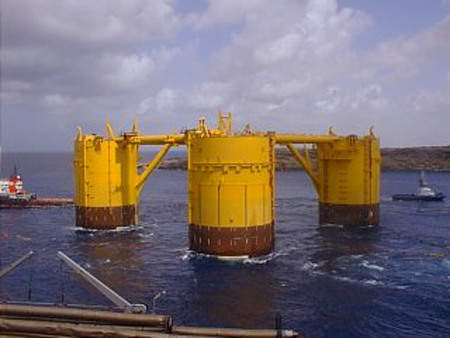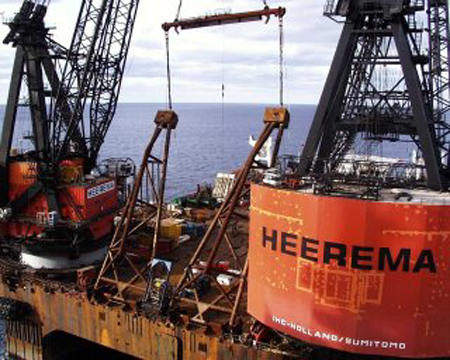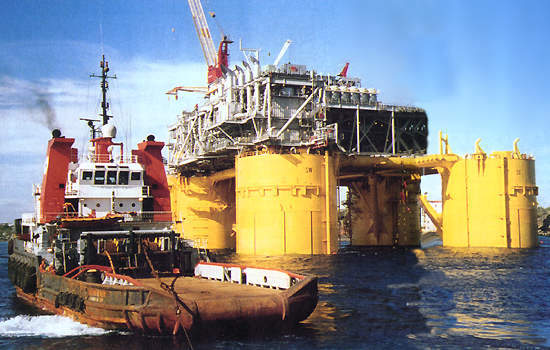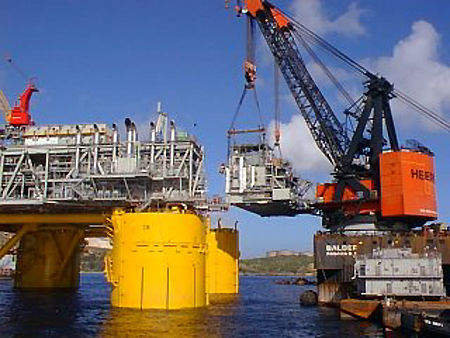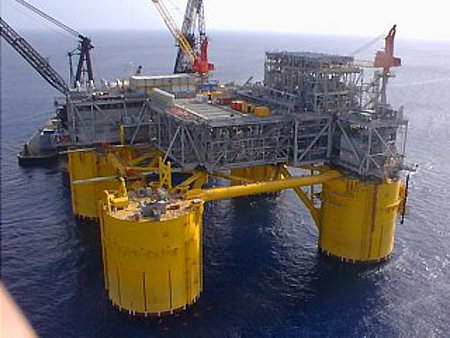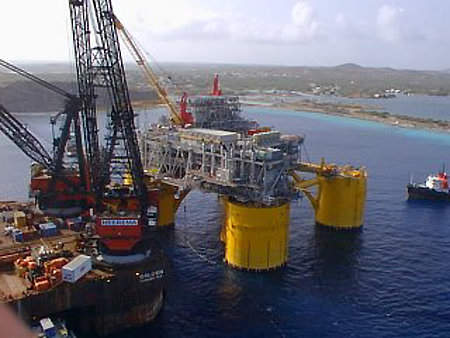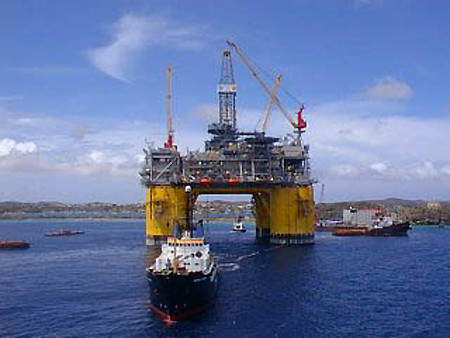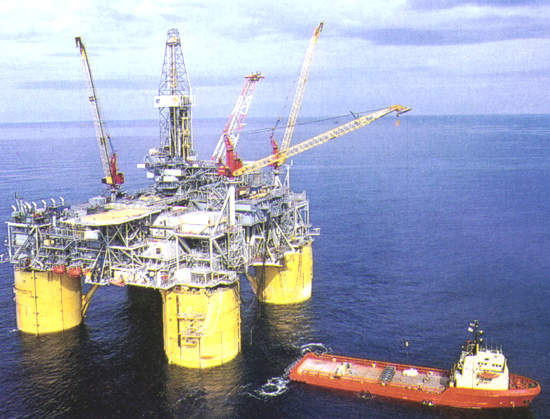The Ursa unit is located approximately 130 miles south-east of New Orleans. It encompasses Mississippi Canyon blocks 808, 809, 810, 852, 853 and 854. The water depth averages approximately 4,000ft.
Shell is the operator of the project, with 45.39%. BP Exploration & Production Inc has 22.69%, while Exxon Mobil Corp and ConocoPhillips each have 15.96%.
Discovery
The discovery well was drilled in 1991 with Sonat’s Discoverer Seven Seas drillship on Mississippi Canyon block 854. In addition to the discovery well, two delineation wells and two sidetrack wells were also drilled.
Initial development plans for the $1.450bn project specified as many as 14 producing wells from the TLP. Initial well rates were anticipated at as much as 30,000 barrels (bbl) of oil and 80 million cubic feet a day (MMcf/d) of natural gas.
Field production began on 8 March 1999, and by July 2008 the site, and the neighbouring Princess field, had produced nearly 400 million barrels of oil (boe).
Tension leg platform: design
The TLP has been designed to simultaneously withstand hurricane force waves and winds. The structure design specified a total displacement of approximately 97,500t.
The TLP is 4,285ft-high from the sea floor to the crown block of the drilling rig.
Tension leg platform: fabrication
The hull, built in Neweo in Taranto, Italy, is comprised of four circular steel columns, which are 85ft in diameter and 177ft-high, connected to a ring pontoon 38ft-wide and 29f-high, with a rectangular cross section.It weighs approximately 28,600t.
Fabrication began in July 1996 and it was transported across the Atlantic by Heerema’s TT-851 barge, the longest transport barge in the world.
Deck
The deck is comprised of six modules, namely the wellbay, quarters, power, drilling and two process modules. These deck modules are arranged in an open-truss frame design, 300ft x 300ft and 50ft-high, with a total steel weight of approximately 12,500t.
The total topside weight is approximately 22,400t, including all equipment and the drilling rig. J Ray McDermott International in Morgan City, Louisiana, carried out the module construction, which began in July 1996.
It incorporates complete separation, dehydration and treatment facilities, designed to process 150,000bbl of oil and condensate per day, plus 400MMcf of gas and 50,000bbl of produced water per day.
The quarters module houses up to 110 people.
Tendons
The TLP is held on-station by 16 tendons, four per corner. These have a diameter of 32in and a wall thickness of 1.5in.
Each tendon is approximately 3,800ft-long and the total weight for the 16 tendons is approximately 16,000t.
Foundation
The lower end of each tendon is attached to receptacles secured in the foundation system consisting of 16 piles.
The piles are 96in in diameter and 440ft-long, weighing approximately 380t each.
Installation
The plan to install the modules offshore was abandoned due to time constraints.
Instead, six modules were installed, along with the drilling rig, in Caracas Bay, Curacao. The TLP was installed by Heerema using the SSCV Balder.
Subsea
There are 24 well slots and the well layout on the seafloor is arranged in a rectangular pattern, approximately 100ft x 60ft.
Drilling
Three of the planned development wells from the 24-slot TLP were pre-drilled. The drilling operations began in February 1997.
The TLP supports a single modified API platform-type drilling rig (leased) equipped with a surface BOP and a high-pressure drilling riser.
Export
Production from the platform is transported approximately 47 miles via an 18in-diameter oil pipeline and a 20in-diameter natural gas pipeline to the West Delta 143 platform. Pipeline construction began in 1997.
The steel catenary risers at the TLP were installed by J Ray McDermott, using the Derrick Barge 50. The pipelines were installed by Allseas Marine Contractors, using the pipelay vessel, Lorelay.
Production from Ursa has been falling from a peak in 2000 of 150,000 barrels per day (bpd) of condensate, so in July 2008 Shell started injecting water into the wells. This ‘Waterflood’, which is planned to continue for the next 30 years, has a listed volume enhancement capacity of 30,000boe per day and is expected to extend the life of the field by 10 years.
Waterflood is a method of secondary recovery in which water is injected into the reservoir formation to displace additional oil. The water from injection wells re-pressurises the formation and physically sweeps the displaced oil into adjacent production wells.
The Waterflood topsides injection system injects filtered and treated sea water via two separate flowlines into three subsea sites: one to an existing well site north-west of the Ursa TLP, one to an existing well site south-east of the Ursa TLP and one to a new well site north-east of the Ursa TLP.

